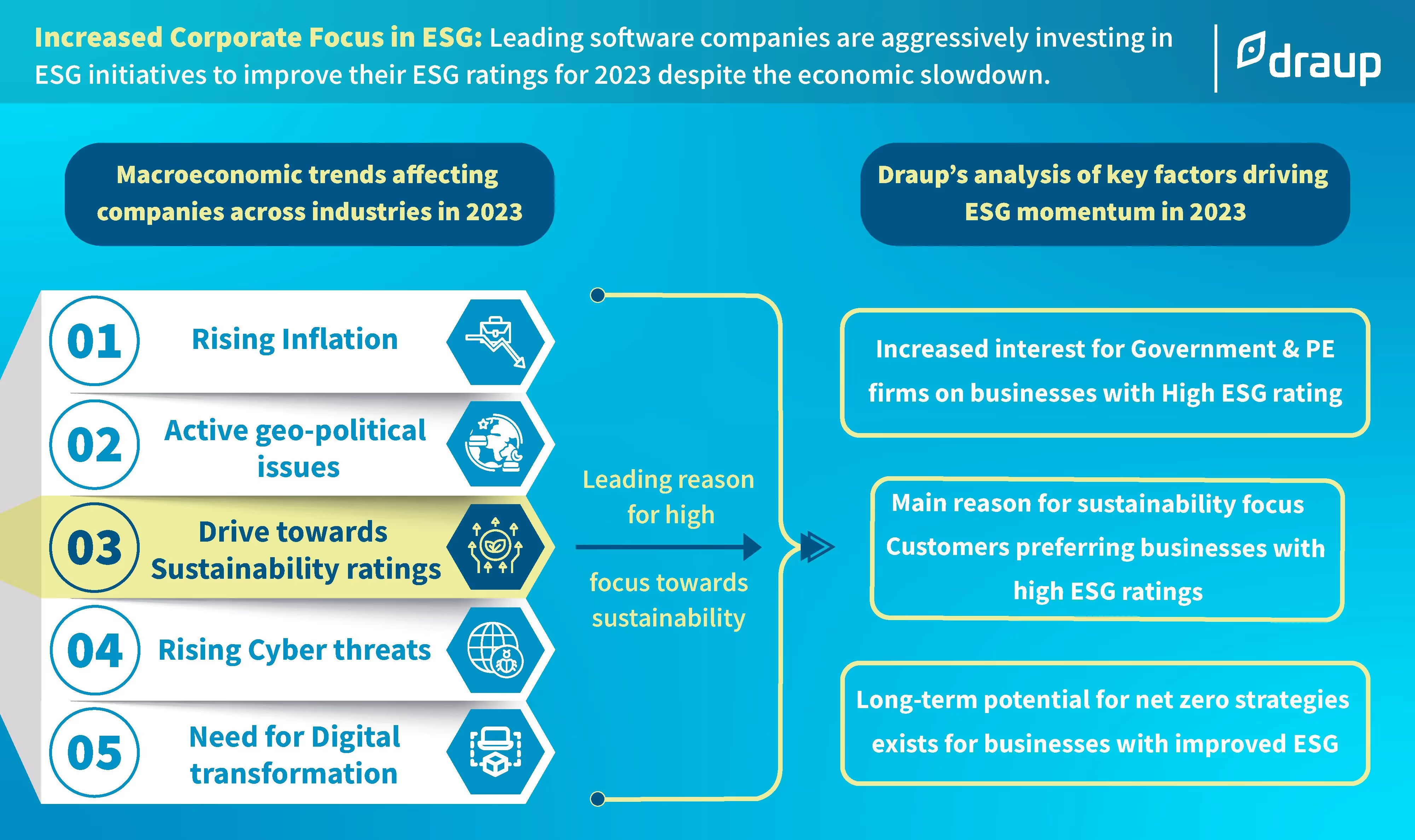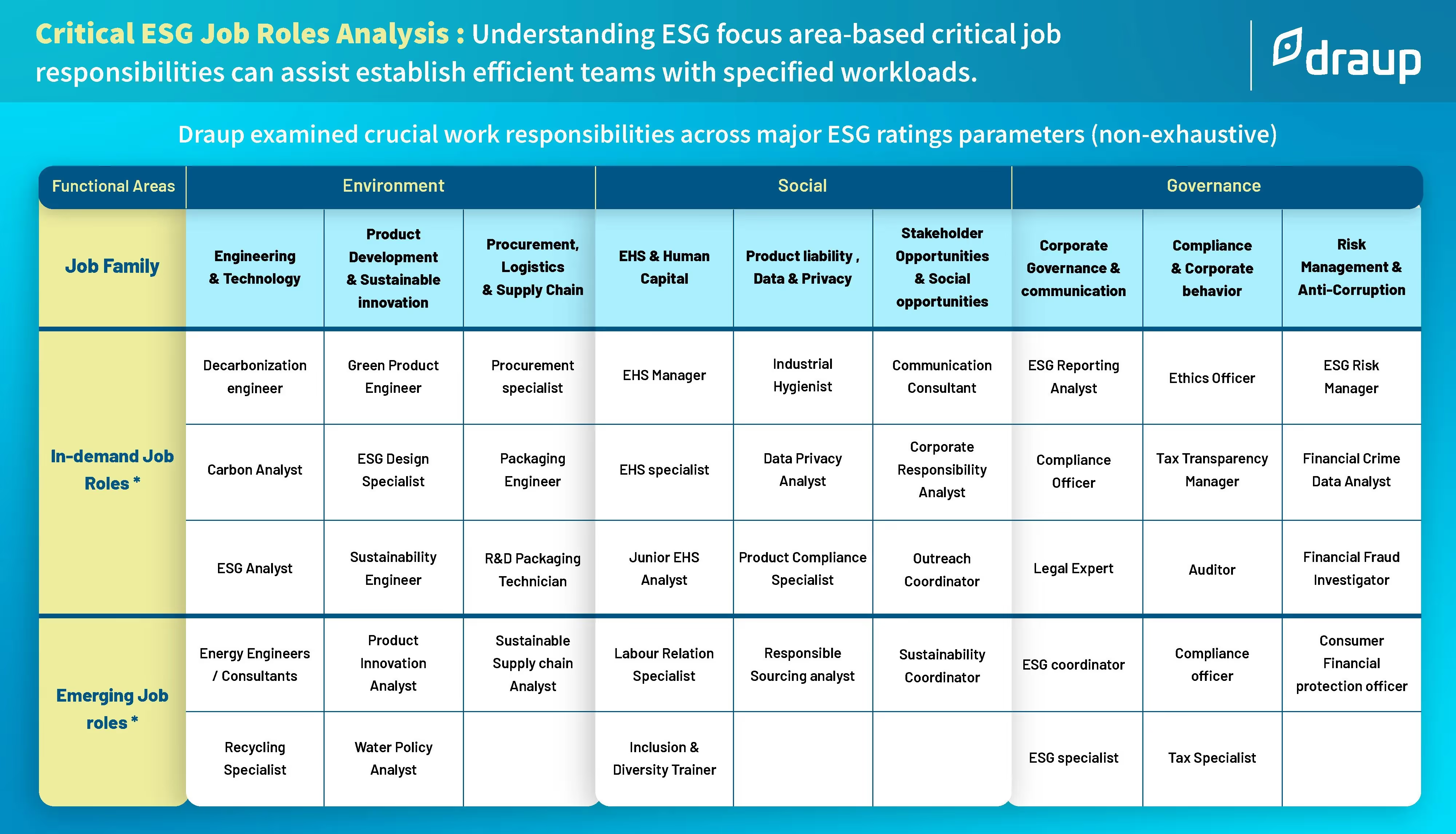Race to Build an ESG Workforce: How Software Companies Are Delivering on their ESG Goals
As companies worldwide face pressure to prioritize environmental, social, and governance (ESG) issues, the race is on to build a workforce dedicated to achieving their ESG goals.
Software companies, in particular, are leading the charge in this area, using their unique skills and resources to drive positive change across a range of areas, from reducing carbon emissions to promoting diversity and inclusion in the workplace
The five largest tech companies post trillions in revenue and multi-billion dollar profits. The last few years have renewed corporate focus on ESG issues.
Businesses aware of ESG risks and taking steps to mitigate them will be better prepared for future legal and reporting requirements. Software companies must have an ESG-compliant workforce planning strategy to see continued growth.
Importance of ESG in Software Companies Workforce Planning
According to a recent study, many software industry CEOs recognize ESG’s importance, but workforce planning teams aren’t ready to measure and analyze KPIs or establish effective plans to manage ESG risks.
The below graphic reinforces the importance of ESG.

Though 34% claim climate change affects corporate funding, only 26% of software industry CEOs have integrated ESG into their strategy.
These key insights reinforce the importance of ESG in software companies
- Per a Neilsen survey, 66% of 30K consumers in 60 countries are willing to pay more for products and services from companies committed to sustainability.
- BlackRock allocated USD 25 Bn to ESG-focused investments, including renewable energy, sustainable infrastructure, and companies with positive ESG records.
- The US government agencies fined Enbridge USD 177 Mn for not complying with ESG regulations regarding the maintenance and operation of its oil and gas pipelines
ESG can improve financial performance and resilience beyond risk reduction. They enjoy stronger equity returns, fewer loan and credit default swaps, and higher credit ratings.
ESG-focused indexes and sustainable funds outperformed regular funds by 4.3% in 2020.
Focus on Skills to Address ESG Talent Gap
ESG is a long-term transformation to maximize future value. To accomplish this transition, workforce planning teams must change their talent pipeline.
This talent pool did not exist 20 years ago, so workforce planning teams cannot hire based on ESG experience. They must do skills-based hiring. ESG strategy demands a new way of thinking and operating involving specific skill sets that can be learned.
For example:
- Persuasiveness to promote ESG and persuade stakeholders,
- Curiosity to explore new undefined areas,
- Ability to navigate ambiguity during market uncertainties, and
- A mindset that connects the dots to create ESG goals and ambitions but also understands how to mobilize and operationalize the business.
Creativity, adaptability, critical thinking, and global perspective application are essential skills complemented by a passion for ESG.
As the talent may lack experience in this new field, workforce planning teams could tap into the existing workforce.
68% of workers would participate in ESG efforts, and 42% would spend enough time to make them a success outside of their regular duties. Capability evaluations will help you find areas of talent to develop.
Reskill/Upskill and Create an ESG Team to Realize the ESG goals
Workforce planning must involve aligning employee learning plans with corporate ESG business strategies. Upskilling and reskilling people accelerate the transformation and keep them competitive.
The learning strategy must take a two-pronged approach:
- Targeted reskilling for talent actively focused on ESG
- Engagement opportunities to support corporations in activating ESG change
You need a talent management strategy to engage and challenge ESG-focused talent in their growth. Learning should be a key objective and basic part of any position.
Employees must take the time to learn and implement new ideas. Also, the management must provide informal practice spaces for employees to evolve.
Workforce planning teams must assess candidates and train them based on these three qualities:
- Passion: They must be philosophically in the right place to be interested. It is about attitude, personal conviction, and a will to contribute. In addition to technical skills, workforce planning teams must look for passion.
- Adaptive and critical thinking: The software industry moves so quickly that employees must keep up. Organizations need individuals with rigor, critical thinking, and agility. They must look for people who are comfortable psychologically holding seemingly paradoxical ideas.
- A multidisciplinary and systems perspective: Besides expertise in sustainability or finance, talent management teams could find candidates with a world view from multiple perspectives to connect the dots among disciplines and cultures.
They could encourage people to focus on what someone could do rather than what they have done. The nature of ESG and sustainability is much about influence, education, persuasion, resilience, and facilitation.
Individuals must see a broad range of perspectives. For instance, along with hard-nosed financial analysis, individuals must understand the linkages between what is driving value.
Draup analyzed over ten tech companies with high ESG ratings to understand a standard ESG team structure. Talent management can help build efficient teams with specific tasks with an ESG focus.
Let us understand critical job roles based on the analysis in the below infographic:

Insights for ESG Workforce Planning and Cost Rationalization
- Draup’s global talent analysis shows a 400% increase in job demand in India, Hong Kong, ASEAN, and emerging talent hotspots.
- EMEA has the highest installed talent with an average workforce experience of 10+ years. With a Y-O-Y growth rate of 6%+, APAC consists of high entry-level installed talent.
- Companies can globalize ESG teams at different experience levels and functions to leverage specific talent from matured and niche ESG locations.
The report contains a cost assessment of various talent hotspots for workforce planning to build an ESG team with 2X cost-effectiveness.
- ESG roles and inclusivity culture go hand in hand
You may observe that we have included Inclusion & Diversity Trainer in the above infographic. Your organization must be hardwired to practice DEI (diversity, equity, and inclusion), which is generally a top goal in the “S” of ESG.
Workforce planning must create an operational model that elevates marginalized voices and brings more varied viewpoints.
Draup analyzed ESG team structure and job roles across the software industry. The report has insights into workforce planning to build ESG teams. The report covers the following:
- Workforce planning strategies to overcome ESG team building challenges.
- Team structure in leading software companies.
- Talent intelligence on global ESG talent hotspots and cost-saving strategy.
The Draup platform’s Workforce Planning feature lets you browse trending roles with the role map, top core and soft skills, and talent hotspots with top employers. You can also learn about the talent ecosystem in different locations and sectors.
It draws data from over 8,000 sources and analyzes over 4,500+ job roles, 2,500+ locations, and 100,000+ courses spread over 33 industries. It contains an analysis of 4M+ career paths and 30,000 skills in its extensive database.
Workforce planning teams can use the data to:
- Right size their workforce
- Create accurate talent forecasts
- Identify and bridge the skills gap
- Perform a 360-degree talent analysis
- Estimate costs
and more to create a high-impact ESG team.










.svg)



















.svg)





.svg)
